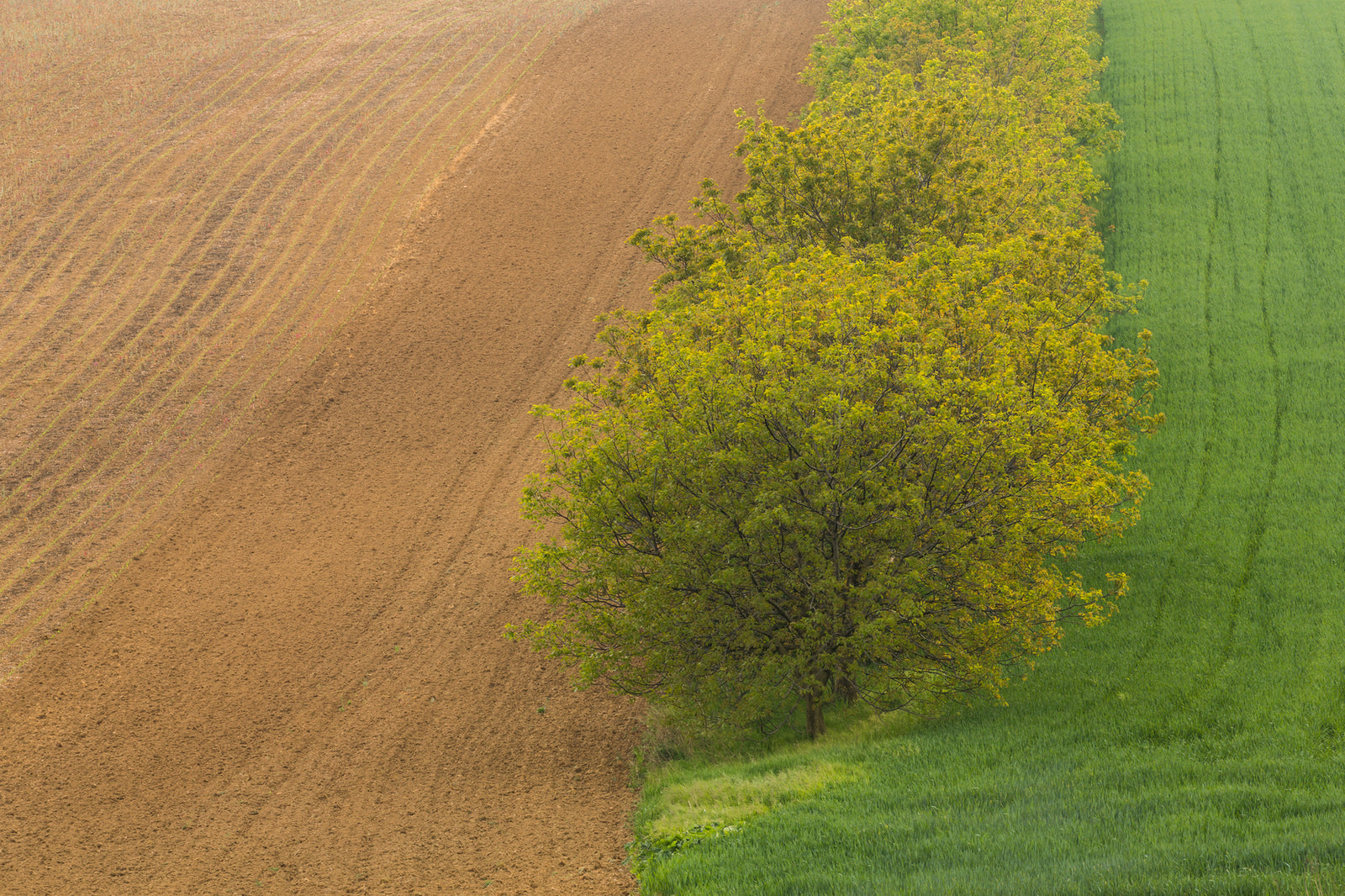Regenerative Agriculture And What We Learned From Kiss The Ground

Sometimes unimagined simplicity, just getting back to basics, is the answer to perplexing and complex issues. And it turns out, in the case of climate change (named the most challenging, most unmanageable political issue the world has ever faced) the solution is right under our nose - or rather, our feet!
That’s the refreshing premise of the Netflix documentary Kiss the Ground, which offers a very efficient and achievable fix. We don’t typically dedicate an entire blog article to promoting a film, but this one is so important to everyone, so easy to understand, so scientifically valid and so inspiring that we could not help but share what we learned. The actual solution is so simple… and it’s something people have done successfully for millennia.
What We Learned from Kiss The Ground
Conventional agriculture is one of the biggest contributors to greenhouse gases
What do we mean by conventional agriculture? Row crops, which are grown on open land using very modern industrial agricultural practices which include high-tillage and use of chemical-based pesticides, herbicides and fungicides, are a perfect storm for topsoil degradation. Additionally, confined animal feeding operations (CAFOs) where mainly cows, pigs and chickens are packed into confined feedlots and are fed genetically-modified corn, soybeans, and alfalfa produced by the majority of America’s conventional row crop farms.
Though we hear a lot about how CAFOs contribute to climate change by producing methane and toxic run-off, we don’t hear much about the massive role conventional row cropping plays. In a nutshell, healthy soil naturally sequesters a tremendous amount of carbon via plants, which soak up and draw down that carbon into healthy soil from the atmosphere. Thus, when land is tilled, it releases loads of stored carbon - which is not a good thing!
One of the more poignant scenes in Kiss the Ground is when they show NASA footage displaying the amount of carbon circulating in the atmosphere during our springtime tilling season vs. summer when the plants come up and draw down that carbon. The difference is irrefutable. Also, chemical pesticides, herbicides and fertilizers used on crops not only hurt the environment by leaching toxic chemicals into our groundwater, air, food, animals, wildlife and more, they also degrade the soil by killing off all its beneficial microbes.
Similar to our gut microbiomes - which like soil, were believed to be sterile just a few years ago - soil is alive and meant to be teeming with microbes, fungi and bacteria. However chemical pesticides act like antibiotics on the soil and are grossly overused. Case in point, glyphosate, commonly known as RoundUp and now one of the most widely used pesticides in the United States is also linked to cancer and other health issues.
Healthy soil is the key to ending our carbon crisis
Healthy, microbial-rich soil has the magical ability to create healthy plants and trees that pull down a massive amount of carbon which is then sequestered in the soil while releasing oxygen and much-needed moisture into the atmosphere. In a healthy soil ecosystem carbon doesn’t just sit idle; it’s used by plants and soil microbes to enhance their health and biodiversity. It's encouraging that healthy soil not only has the ability to sop up all the carbon from modern emissions, but to draw down our entire legacy load of carbon from the last 200+ years, with room to spare. Isn’t that incredible?! The dirt we walk on, garden in and sweep off our sidewalks has the capacity to solve our carbon problem better than reducing emissions, meat consumption and clear cutting (though all those factors also play an essential role!).
To put that into perspective, according to climate change expert, activist, environmentalist and author of “Draw Down” Paul Hawken, if more of the world’s leading carbon-producing nations pledge a shift to regenerative agriculture to regenerate the world’s disappearing topsoil, we can expect the earth to start cooling in a matter of two decades. Wow!
The solution is simple: get back to basics
We are starting to see the unintended consequences of modern farming practices which rely on the use of machinery to till the soil and chemical treatment of the crops. Regenerative farming is what people did for centuries before the invention of the plough and chemical agriculture. We’ve instinctually known how to strike a balance between nature and our food supply needs.
The solution is simple: change our farming and grazing practices. Many other countries, like the UK, Germany, Canada, Poland and Australia have pledged to do this themselves. This means:
- Stop monocrop farming (corn, soybeans, alfalfa) and increase biodiversity to include a variety of plants, perennials, and livestock.
- Stop tillage and enrich soil organic matter and structure using cover crops and composts. This improves water infiltration of the soil so you have healthier plants, more stored water in the soil (drought-resistance) and no run-off.
- Stop the use of chemical pesticides, herbicides and fungicides. Instead, work with nature to build the soil which produces healthy plants that naturally resist insects, disease and drought.
- Graze livestock purposely - support livestock eating grass on a proper rotation! The grass feeds the animals, the animals fertilize and aerate the grass, the grass pulls down the carbon and replenishes the soil with nutrients… and the cycle continues. Our cattle, bison, poultry, hogs and sheep should all be on grass and/or in forested areas as a birthright.
The parallels between human and planetary health
Perhaps the most poignant message in the film is the connection between the health of our soil and our health as human beings. Just as our bodies cannot sustain chronic stresses such as heavy metals, injury, pesticide exposure, poor nutrition, chemicals and more, neither can our soil sustain regular invasive tilling, monocropping, lack of nutrients and pesticide application. Our health is inextricably linked, which gives us incredible incentive to get behind this movement.
On a personal note, when I was told I would need to go on dialysis and eventually have a kidney transplant many years ago, for me the solution was not a medical prescription or procedure. The answer was just under my nose: what I was eating and what I was breathing. Getting back to basics changed my life. The solution for our planet is simple, entirely achievable and right under our feet!
How we can affect change as individuals
A powerful way to help support regenerative agriculture and alter the course of climate change is to opt for organic, naturally-grown and/or pesticide-free food. Even better if you can get your produce or meat from a regenerative farm! If enough of us make this small shift, it will send a message to our government that we intend to “vote soil” and they should too. Plus it enhances our own health by supplying us with food that is alive, chemical-free and teeming with beneficial microbes from healthy soil that supports our own personal ecosystem.
This is another reason why what we eat matters so much. We encourage you to vote for our planet and yourself with your food dollars. Additionally, if you haven’t #TossedTheToxins yet and removed all pesticides, weed killers, chemical pest control and lawn care services from your life, now is the time to do so! Learn how in just a few minutes with our #TossTheToxins online course.
In summary...
This article is just a glimpse into the incredible science of how regenerative agriculture can stop climate change. We encourage you to watch the film, get inspired, and affect change! You can view the trailer here, and we promise it will be a sweet breath of fresh air compared to all the doomsday, fear-based run-of-the-mill news reports on climate change we’ve become accustomed to. To sum it up:
If we get the soil right then we have → healthy soil → healthy plants → healthy food → climate cooling → more successful farmers → healthy people → healthy planet
There is no downside! We’ll close with one of our favorite quotes from the narrator Woody Harrelson: “In every fight that seems unwinnable, there are those who refuse to give up.” We’re in. How about you?
Categories

Marilee Nelson
Marilee Nelson is an Environmental Toxins expert who has spent nearly 30 years advocating for the chemically-sensitive and chronically-ill. She is a Board Certified Nutritionist, Certified Bau-Biologist and Bau-Biology Inspector and specializes in Food As Medicine. She has helped thousands of families and individuals identify, heal and recover from toxic exposures and is on a mission to revolutionize the way American families view their health.






![How to Keep Produce Fresh Longer [Complete Guide]](http://branchbasics.com/cdn/shop/articles/BranchBasics202100662_e3230512-c4be-4326-b53b-f713c972fa8c.jpg?v=1743446392&width=1600)

